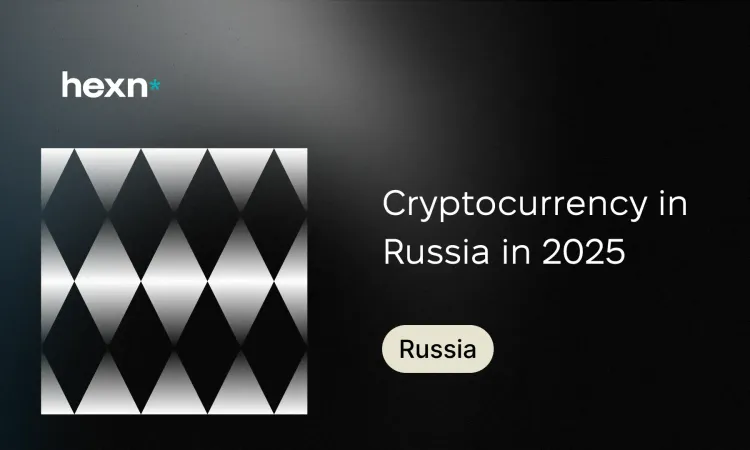Cryptocurrency in Russia in 2025: what’s allowed, what’s prohibited, and how to avoid 115-FZ scrutiny
Rules for digital assets in Russia are being refined: there are tighter requirements around payments, taxes, documentation, and compliance. Here’s what you can and can’t do—and how to act safely in 2025.
Basic Status: Digital Currency Is Property, Not Money
Russian law recognizes digital currency as an object of civil rights, but not as legal tender. In practice, this means:
- You cannot pay with cryptocurrency “like with rubles” in ordinary transactions within Russia.
- You cannot publicly announce that you accept crypto as payment.
- Legal protection for crypto transactions is available only if you notify the tax authorities as required and keep proper documentation.
There are narrow exceptions for foreign trade settlements: in 2024–2025, experimental legal regimes (ELRs) are being piloted under regulator oversight, allowing certain digital-currency operations for cross-border trade. These are special regimes with a limited set of participants and strict compliance—they do not lift the ban for everyday domestic B2C.
Transactions and Custody: Buying, Selling, Exchanging
Transactions with cryptocurrency as property (buy/sell/exchange) are permitted if you comply with applicable law, including tax and currency-control rules. The state reserves the right to impose restrictions in the interest of financial stability.
Custody in personal wallets is not prohibited. Follow security hygiene: store seeds/keys carefully, log inbound/outbound transactions (dates, amounts, fees, tx links), and maintain records for tax and banking purposes.
Taxes and Reporting: A Payments Ban ≠ No Taxes
The ban on accepting crypto as payment does not cancel income tax. Proceeds from selling/exchanging digital assets are taxed at 13/15%. To reduce risk:
- collect primary records (CSVs/statements/screenshots, tx links),
- record exchange rates and fees on the transaction date,
- file Form 3-NDFL on time.
See our detailed tax guide for more.
How to Avoid Card Blocks Under 115-FZ
In 2025, banks significantly tightened transfer monitoring under Law 115-FZ: temporary card and payment blocks have become more frequent when patterns look suspicious (money laundering, activity inconsistent with profile). What to do:
- Don’t run business transactions through a personal card; fill in the payment purpose correctly.
- Avoid transfers to unknown parties/phone numbers; keep SoF/SoW (source of funds/source of wealth) documentation handy.
- Keep full crypto-transaction records (CEX/DEX/wallets: CSVs, statements, screenshots, tx links).
- If blocked, request the bank’s legal basis (specific clause), the document list required, and a fast verification channel.
- Plan fiat on/off-ramps: avoid structuring (splitting into many small transfers) and don’t mix personal and business payments.
Safe P2P Cash-Out on Exchanges
Cards most often attract financial-monitoring attention during P2P off-ramping from exchanges: many similar incoming/outgoing transfers in a short time, split amounts, different senders, and “telling” payment notes are classic 115-FZ triggers. Here’s how to reduce risk.
Before the trade
- Use only your own bank accounts/cards. Bank name = exchange KYC name.
- Choose verified counterparties with a high completion rate and the same bank/payment rail (fewer interbank red flags).
- Check your bank’s limits and rules (daily/monthly C2C/SBP volumes, bans on “commercial” activity via personal cards).
During the trade
- Follow the exchange’s instructions for the payment note. Do not write “USDT,” “crypto,” “Binance,” etc. Leave the field blank if the platform allows it.
- Accept funds only from the account holder shown in the order. If the name doesn’t match, cancel.
- Don’t confirm receipt until funds are irreversibly credited (check your statement, not a screenshot).
After the trade
- Save the order ID, chat log, payment receipt, and bank statement. Keep the chain: exchange deposit → P2P order → bank payment.
- Avoid transit behavior: don’t push the whole amount onward immediately; add pauses so you don’t look like a “money mule.”
- Maintain a counterparty log; blacklist users who break rules or pay from third-party accounts.
Process setup
- Use a dedicated bank account for P2P; don’t use your salary card.
- Keep volumes within your bank’s normal client profile; avoid dozens of small credits in a day and avoid single outsized lumps.
- Where possible, stick to the same payment rail (card→card, account→account, SBP) and a standardized payment note—fewer reasons for AML questionnaires.
Conclusion
If you focus on the rules of circulation, keep clean records, and plan fiat flows in advance, cryptocurrency remains an effective income tool.
To earn returns with minimal risk, consider Hexn’s fixed-income deposits with up to 20% APY.
Above all, stay compliant: don’t accept crypto as payment within Russia, document your transactions, and don’t forget your taxes.
